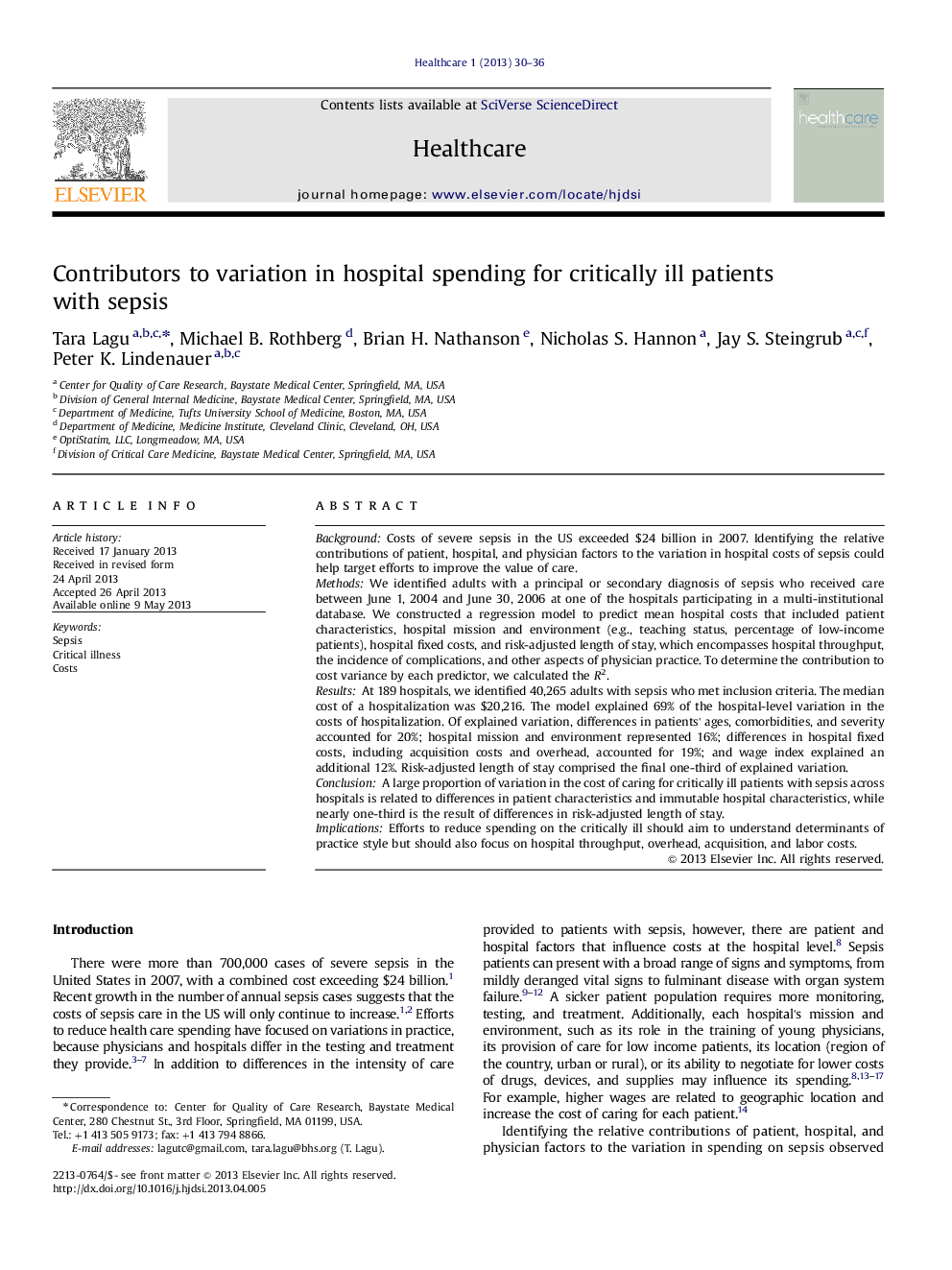| Article ID | Journal | Published Year | Pages | File Type |
|---|---|---|---|---|
| 514933 | Healthcare | 2013 | 7 Pages |
BackgroundCosts of severe sepsis in the US exceeded $24 billion in 2007. Identifying the relative contributions of patient, hospital, and physician factors to the variation in hospital costs of sepsis could help target efforts to improve the value of care.MethodsWe identified adults with a principal or secondary diagnosis of sepsis who received care between June 1, 2004 and June 30, 2006 at one of the hospitals participating in a multi-institutional database. We constructed a regression model to predict mean hospital costs that included patient characteristics, hospital mission and environment (e.g., teaching status, percentage of low-income patients), hospital fixed costs, and risk-adjusted length of stay, which encompasses hospital throughput, the incidence of complications, and other aspects of physician practice. To determine the contribution to cost variance by each predictor, we calculated the R2.ResultsAt 189 hospitals, we identified 40,265 adults with sepsis who met inclusion criteria. The median cost of a hospitalization was $20,216. The model explained 69% of the hospital-level variation in the costs of hospitalization. Of explained variation, differences in patients' ages, comorbidities, and severity accounted for 20%; hospital mission and environment represented 16%; differences in hospital fixed costs, including acquisition costs and overhead, accounted for 19%; and wage index explained an additional 12%. Risk-adjusted length of stay comprised the final one-third of explained variation.ConclusionA large proportion of variation in the cost of caring for critically ill patients with sepsis across hospitals is related to differences in patient characteristics and immutable hospital characteristics, while nearly one-third is the result of differences in risk-adjusted length of stay.ImplicationsEfforts to reduce spending on the critically ill should aim to understand determinants of practice style but should also focus on hospital throughput, overhead, acquisition, and labor costs.
